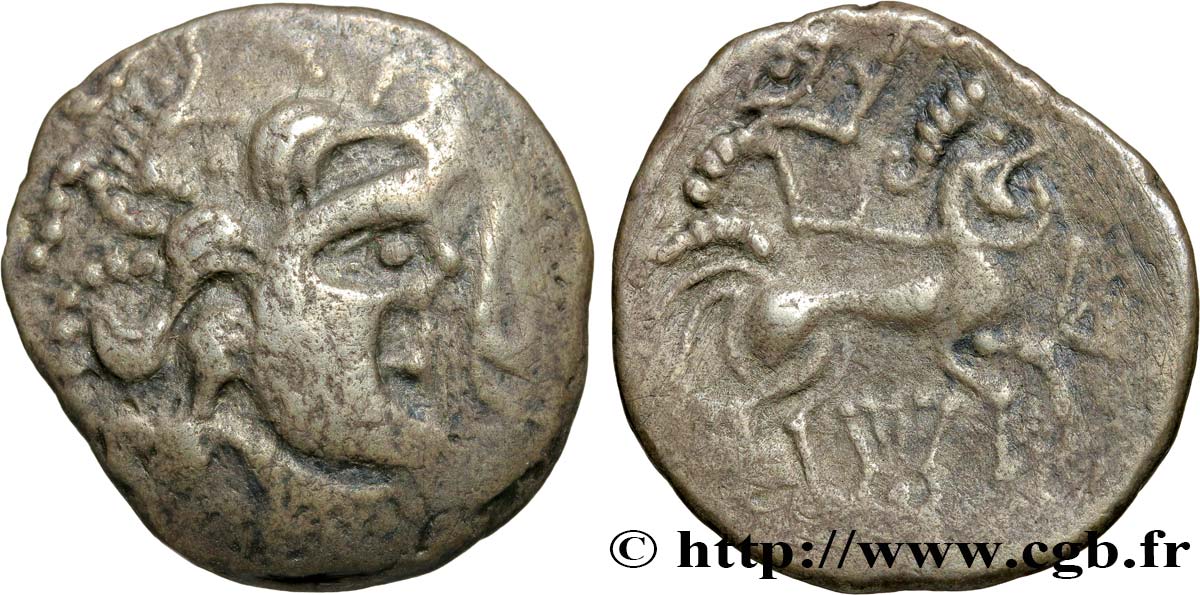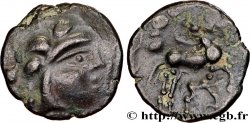Live auction - bga_290101 - GALLIA - BAÏOCASSES (Area of Bayeux) Statère d’argent au sanglier et à la lyre
Чтобы принять участие в торгах, вы должны войти в систему и стать подтвержденным участником аукциона. Войдите, чтобы сделать ставку. Ваш аккаунт будет подтвержден в течение 48 часов. Не ждите до закрытия торгов, чтобы зарегистрироваться.Сделав ставку на данный товар, вы вступаете в юридическое соглашение на покупку выбранного товара и нажатием кнопки «Сделать ставку» подтверждаете принятие вами условий интернет-аукционов cgb.fr.
Ставка может бить сделана только в полном эквиваленте евро. Торги закроются согласно времени, указанному в описании товара, все ставки, сделанные после закрытия торгов, учитываться не будут. Не следует откладывать предложение вашей ставки до последнего момента, так как система может не успеть обработать вашу заявку, и ваша ставка не будет принята. Более детальную информацию вы найдёте здесь: FAQ по интернет-аукционам.
Все ставки победителей подлежат комиссии 18%.
Все ставки победителей подлежат комиссии 18%.
| Оценить : | 600 € |
| Цена : | Нет ставки |
| Максимальная предлагаемая цена : | Нет ставки |
| Конец торгов : | 01 March 2016 15:34:47 |
Тип Statère d’argent au sanglier et à la lyre
Дата: IIe - Ier siècle AC.
Монетный двор / Город: Bayeux (14)
Металл: billon
Диаметр: 21,5 mm
Ориентация осей монеты: 3 h.
Вес: 6,43 g.
Редкость: R3
Комментарии о состоянии
Flan large et un peu irrégulier avec des types centrés mais de frappe molle. Patine de collection ancienne
Ссылки в каталоге: :
Лицевая сторона
Аверс: легенда: ANÉPIGRAPHE.
Аверс: описание: Tête humaine à droite, les cheveux en grosses mèches ; un sanglier dans la chevelure ; cordon perlé enroulé devant le visage.
Обратная сторона
Реверс: легенда: ANÉPIGRAPHE.
Реверс: Описание: Cheval androcéphale galopant à droite ; une lyre entre les jambes ; restes de l'aurige au-dessus du dos ; vexillum devant la tête.
Комментарий
Ce statère s’intègre dans le monnayage tardif de la Basse Normandie, du Cotentin et de Jersey, sans pour autant correspondre exactement à aucune des monnaies publiées !
Le type à la lyre est traditionnellement plutôt attribué aux Abrincatui, mais le style ne leur correspond pas. Comme pour le statère aux deux lyres, n° 662 de MONNAIES 53, ne serait-il pas possible que ce statère soit un "mélange" de Baïocasses et d'Abrincatui, deux peuples mitoyens ?.
This stater is part of the late coinage of Lower Normandy, Cotentin and Jersey, without corresponding exactly to any of the published coins! The type with the lyre is traditionally attributed to the Abricatui, but the style does not correspond to them. As for the stater with two lyres, no. 662 of MONNAIES 53, would it not be possible that this stater is a “mixture” of Bayocasses and Abrincatui, two adjoining peoples?
Le type à la lyre est traditionnellement plutôt attribué aux Abrincatui, mais le style ne leur correspond pas. Comme pour le statère aux deux lyres, n° 662 de MONNAIES 53, ne serait-il pas possible que ce statère soit un "mélange" de Baïocasses et d'Abrincatui, deux peuples mitoyens ?.
This stater is part of the late coinage of Lower Normandy, Cotentin and Jersey, without corresponding exactly to any of the published coins! The type with the lyre is traditionally attributed to the Abricatui, but the style does not correspond to them. As for the stater with two lyres, no. 662 of MONNAIES 53, would it not be possible that this stater is a “mixture” of Bayocasses and Abrincatui, two adjoining peoples?








 Cообщить об ошибке
Cообщить об ошибке Распечатать страницу
Распечатать страницу Отправить мой выбор
Отправить мой выбор Задать вопрос
Задать вопрос Consign / sell
Consign / sell
 Информация
Информация










